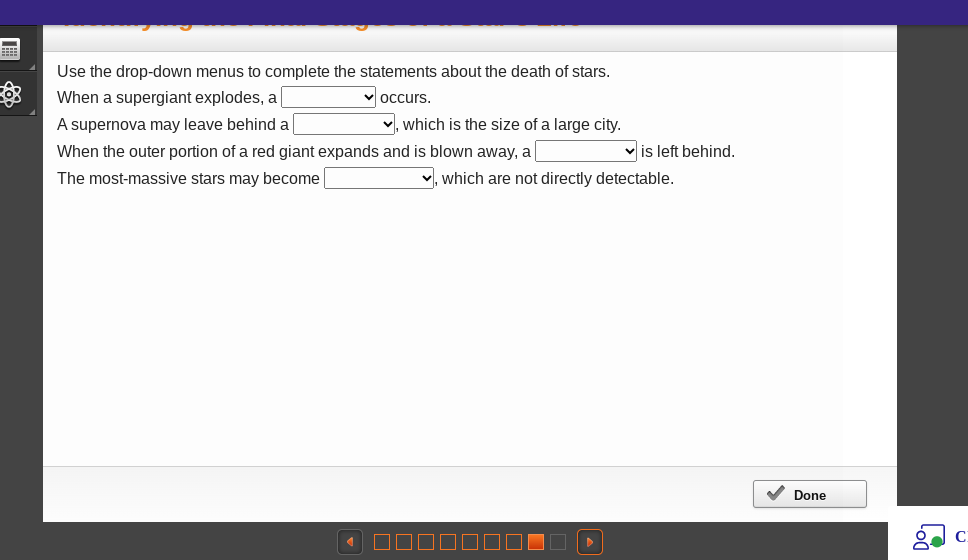Use the drop-down menus to complete the statements about the death of stars. When a supergiant explodes, a __________ occurs. A supernova may leave behind a __________, which is th... Use the drop-down menus to complete the statements about the death of stars. When a supergiant explodes, a __________ occurs. A supernova may leave behind a __________, which is the size of a large city. When the outer portion of a red giant expands and is blown away, a __________ is left behind. The most-massive stars may become __________, which are not directly detectable.

Understand the Problem
The question is asking to fill in the blanks in statements related to the death of stars, specifically focusing on supernovae and the outcomes of red giant stars.
Answer
Supernova, neutron star, white dwarf, black holes.
The final answer is: When a supergiant explodes, a supernova occurs. A supernova may leave behind a neutron star, which is the size of a large city. When the outer portion of a red giant expands and is blown away, a white dwarf is left behind. The most-massive stars may become black holes, which are not directly detectable.
Answer for screen readers
The final answer is: When a supergiant explodes, a supernova occurs. A supernova may leave behind a neutron star, which is the size of a large city. When the outer portion of a red giant expands and is blown away, a white dwarf is left behind. The most-massive stars may become black holes, which are not directly detectable.
More Information
Supernovas occur when supergiants explode, often leaving behind neutron stars or black holes depending on mass. A white dwarf is the final stage for smaller stars like our Sun after the outer layers are shed.
Tips
A common mistake is confusing the stages and remnants of different types of stars at the end of their life cycles.
Sources
AI-generated content may contain errors. Please verify critical information